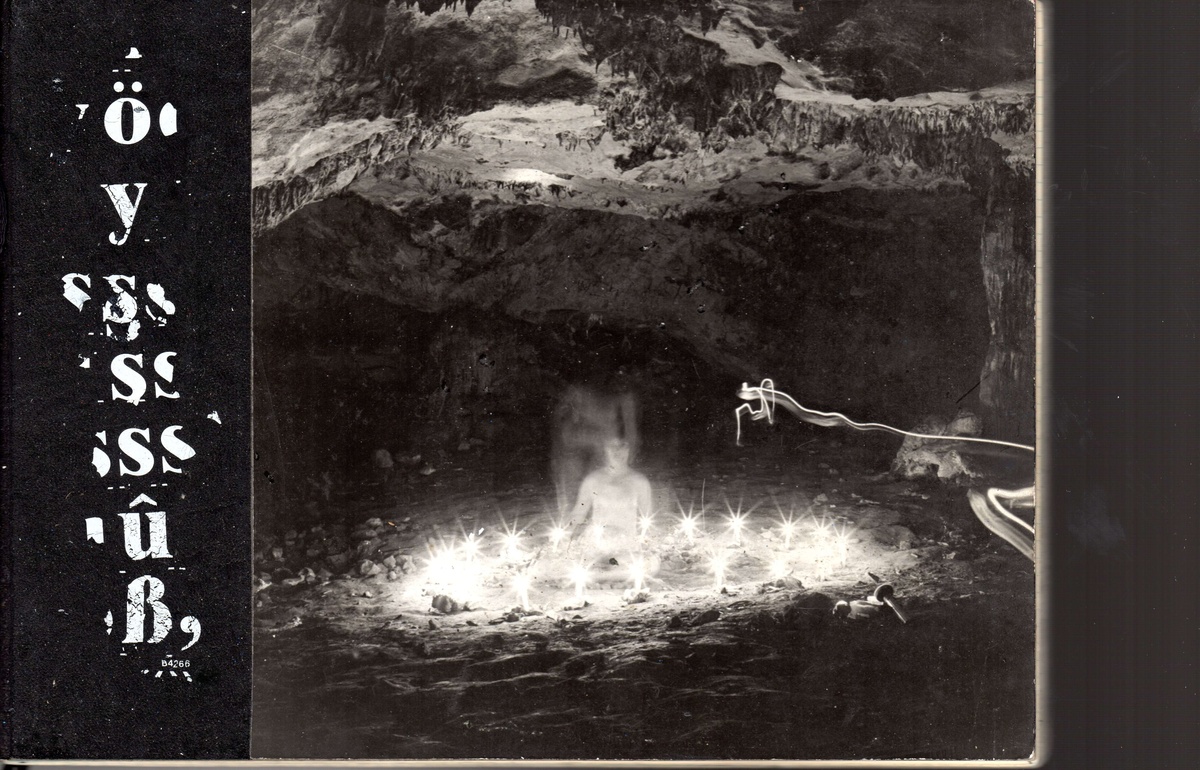Edelson’s ritual performance work includes small private works such as the “Woman Rising” series (1973-74) and larger group or public rituals including “Your 5,000 Years Are Up” and “Memorials to 9,000,000 Women Burned as Witches in the Christian Era” both from 1977. “Woman Rising” is part of a larger practice in Edelson’s early 1970s work in which she photographed her naked body in nature to reclaim the female body and empower women. The energy, direction, and intention were marked on the surface of the images.
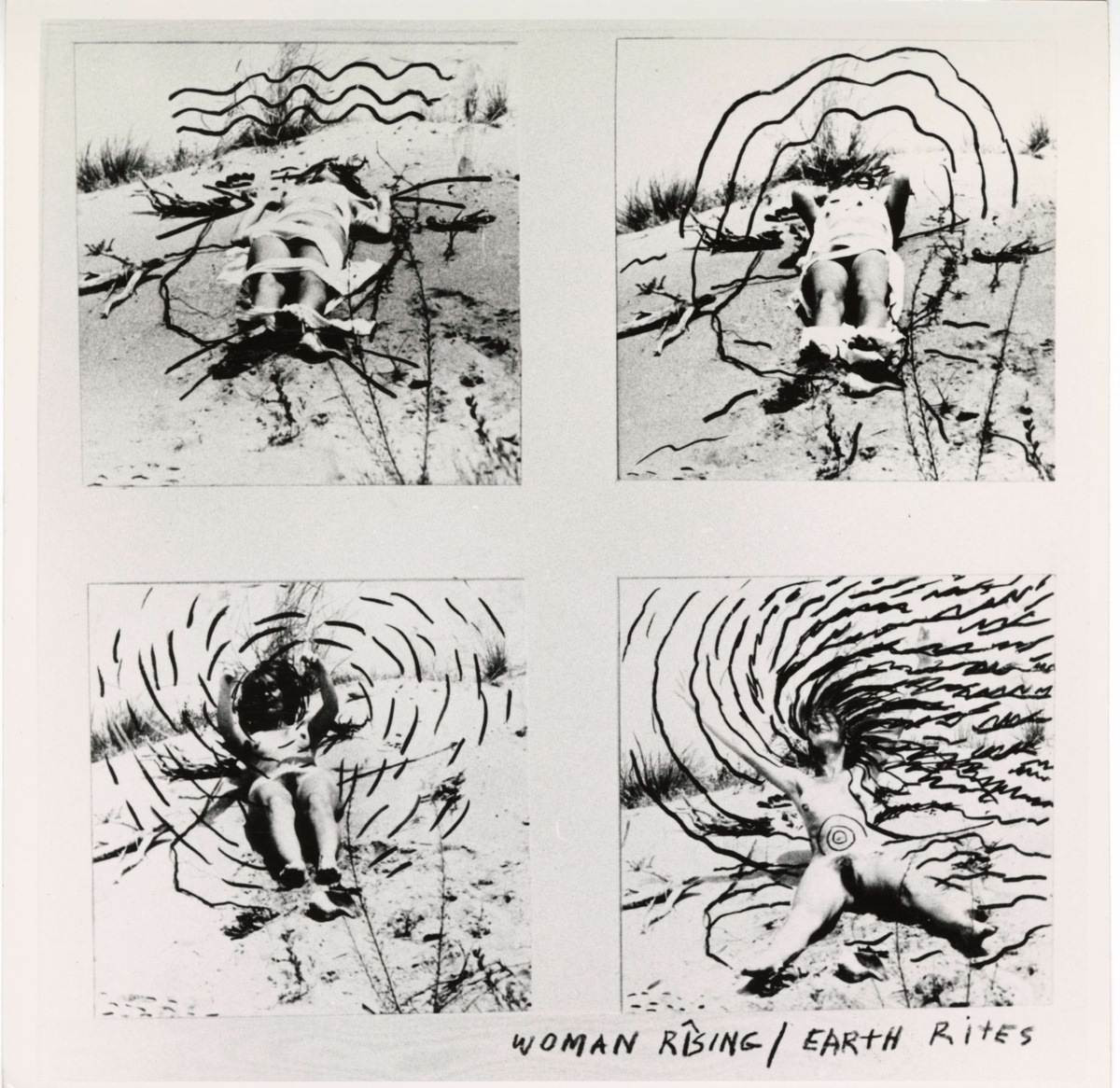
Copyright held by the Estate of Mary Beth Edelson; preserved through a partnership with The Feminist Institute. See record
Ritual Performances

Copyright held by the Estate of Mary Beth Edelson; preserved through a partnership with The Feminist Institute. See record
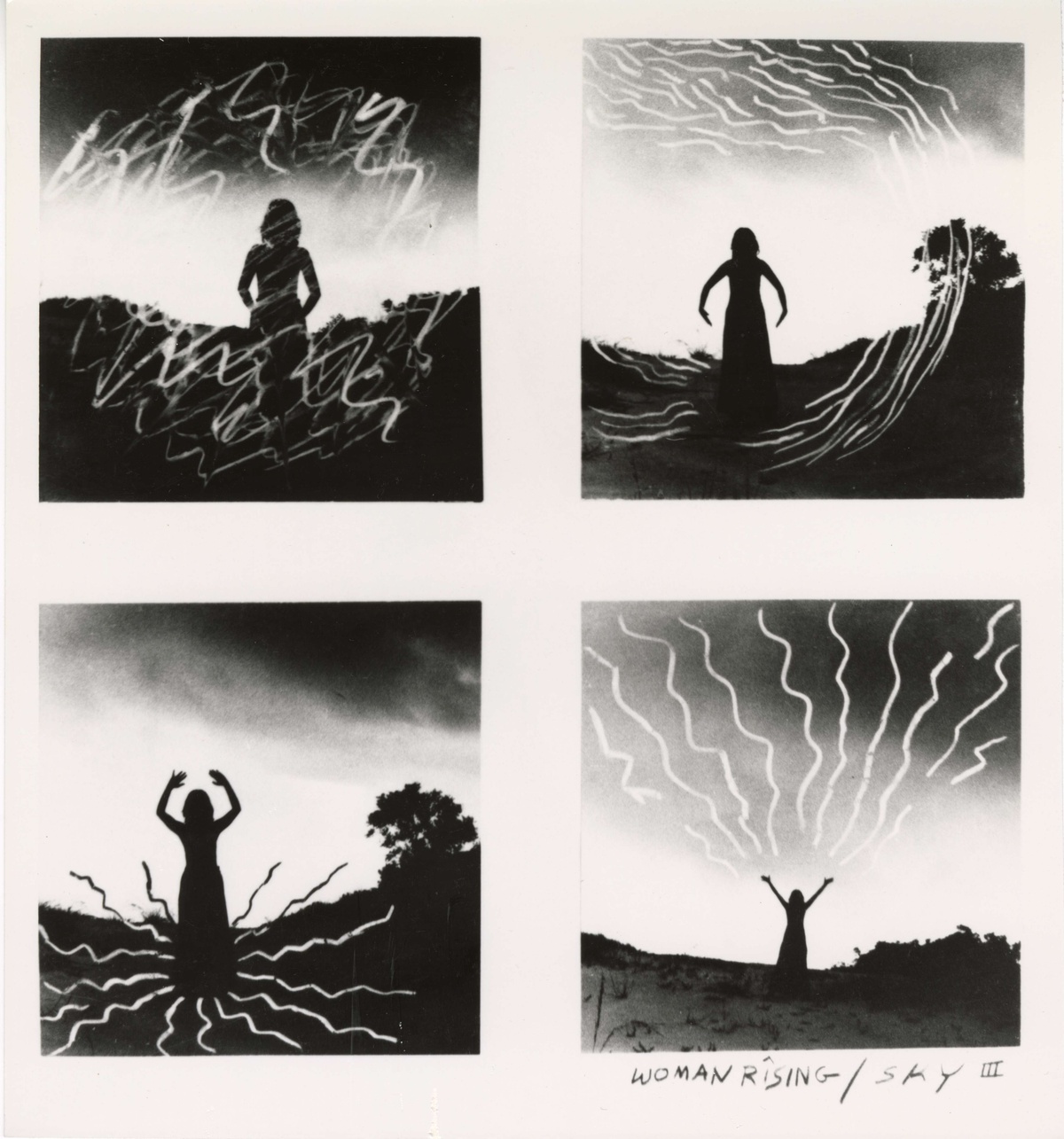
Copyright held by the Estate of Mary Beth Edelson; preserved through a partnership with The Feminist Institute. See record
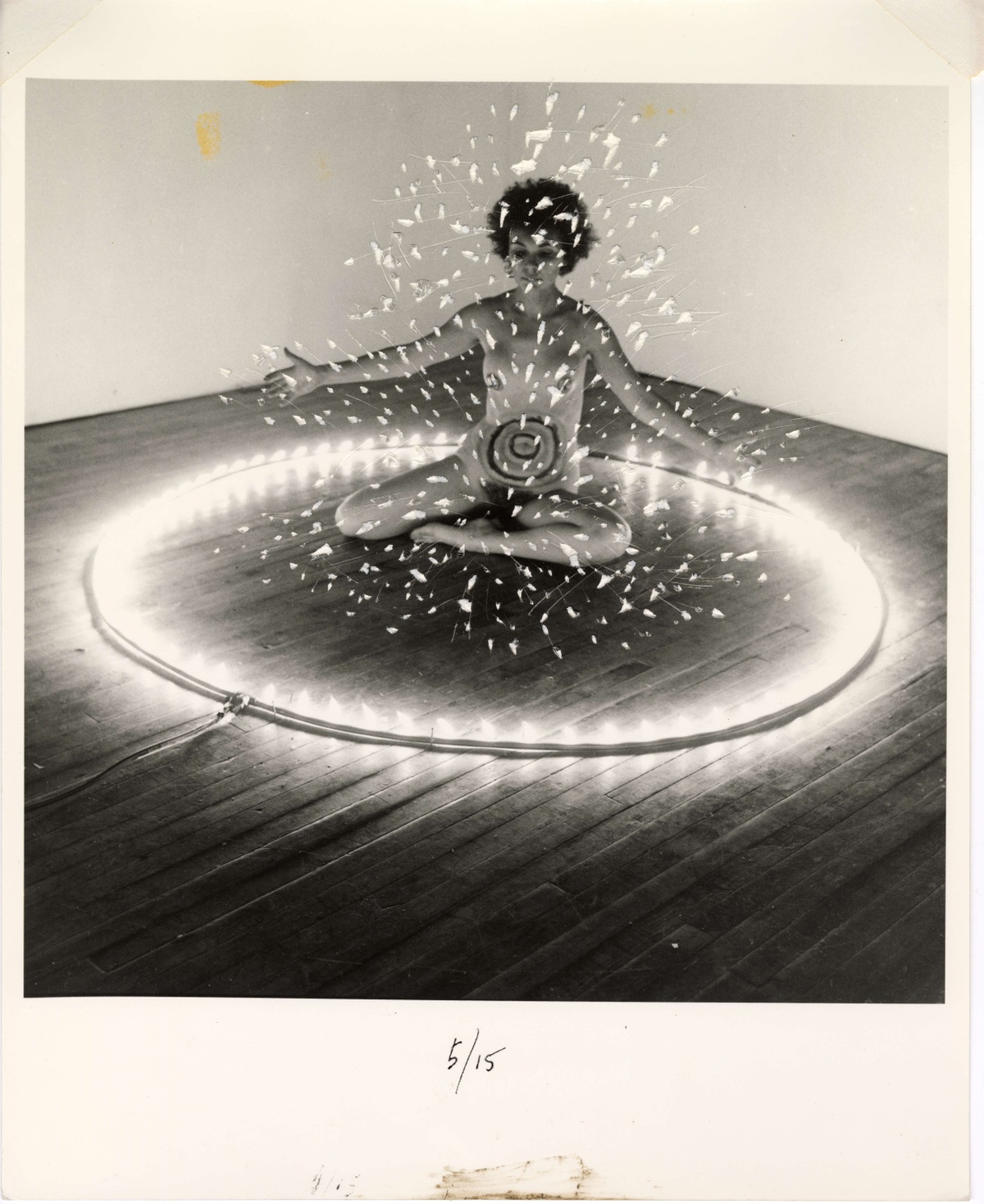
Copyright held by the Estate of Mary Beth Edelson; preserved through a partnership with The Feminist Institute. See record
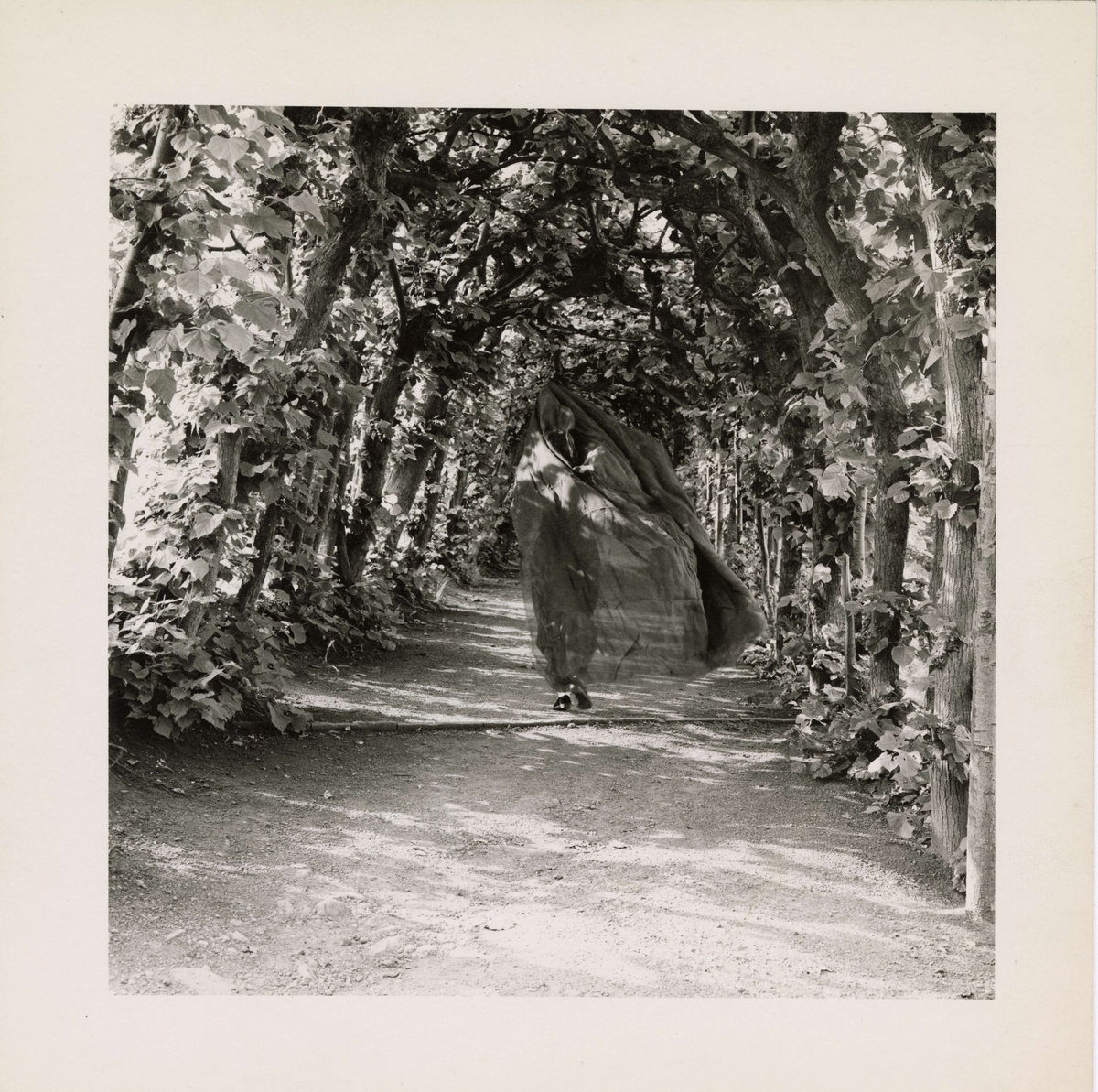
Copyright held by the Estate of Mary Beth Edelson; preserved through a partnership with The Feminist Institute. See record
By 1977, Edelson began covering her body in the private ritual performances believing she had examined what she could with her naked form.
“Light Feet” (1977) was created in 1977 in the arbor of the Castle Lowenburg in Kassel Germany and is part of the larger project Proposals for “Memorials to the 9,000,000 Women Burned as Witches in the Christian Era”.
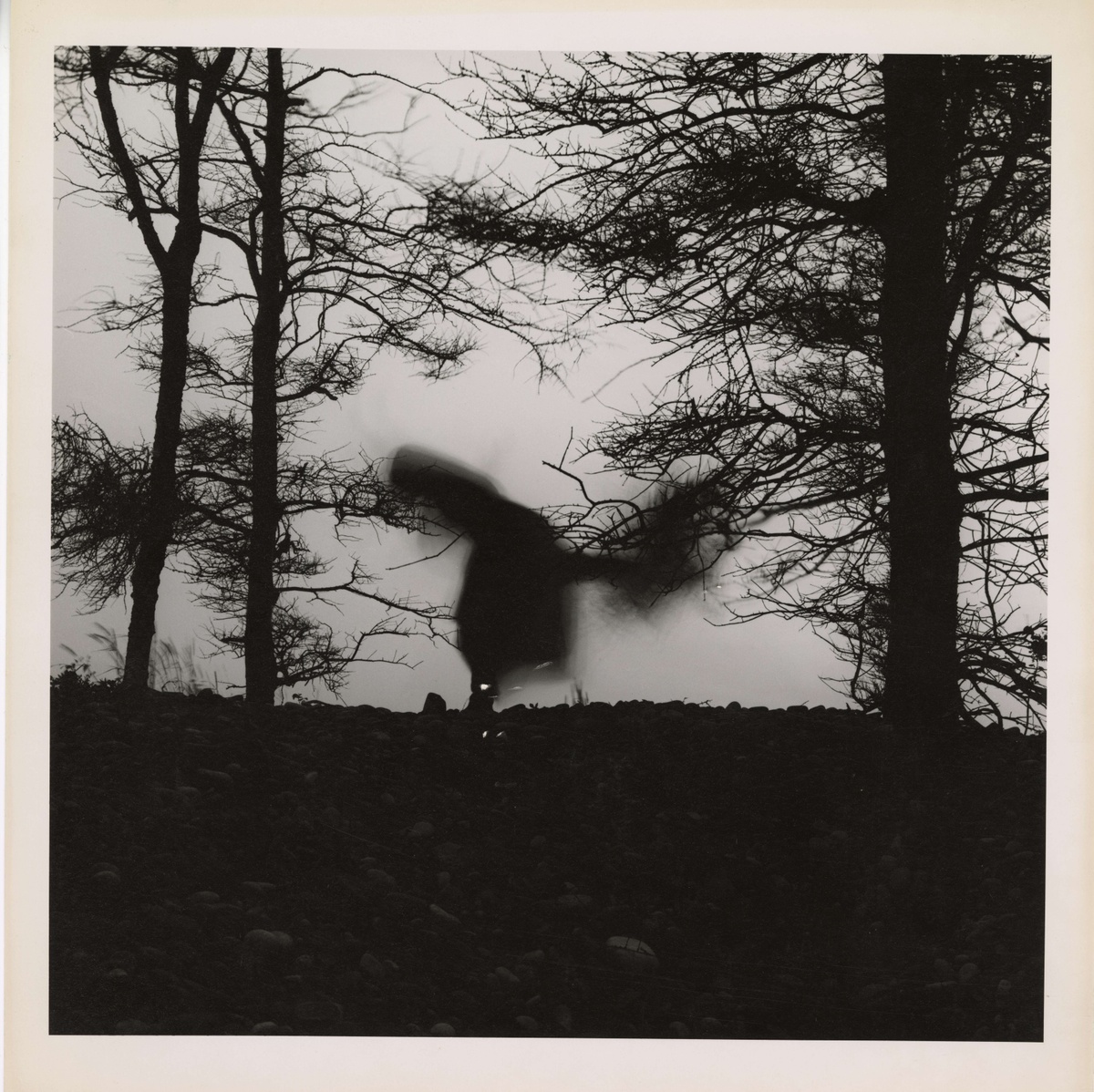
Copyright held by the Estate of Mary Beth Edelson; preserved through a partnership with The Feminist Institute. See record
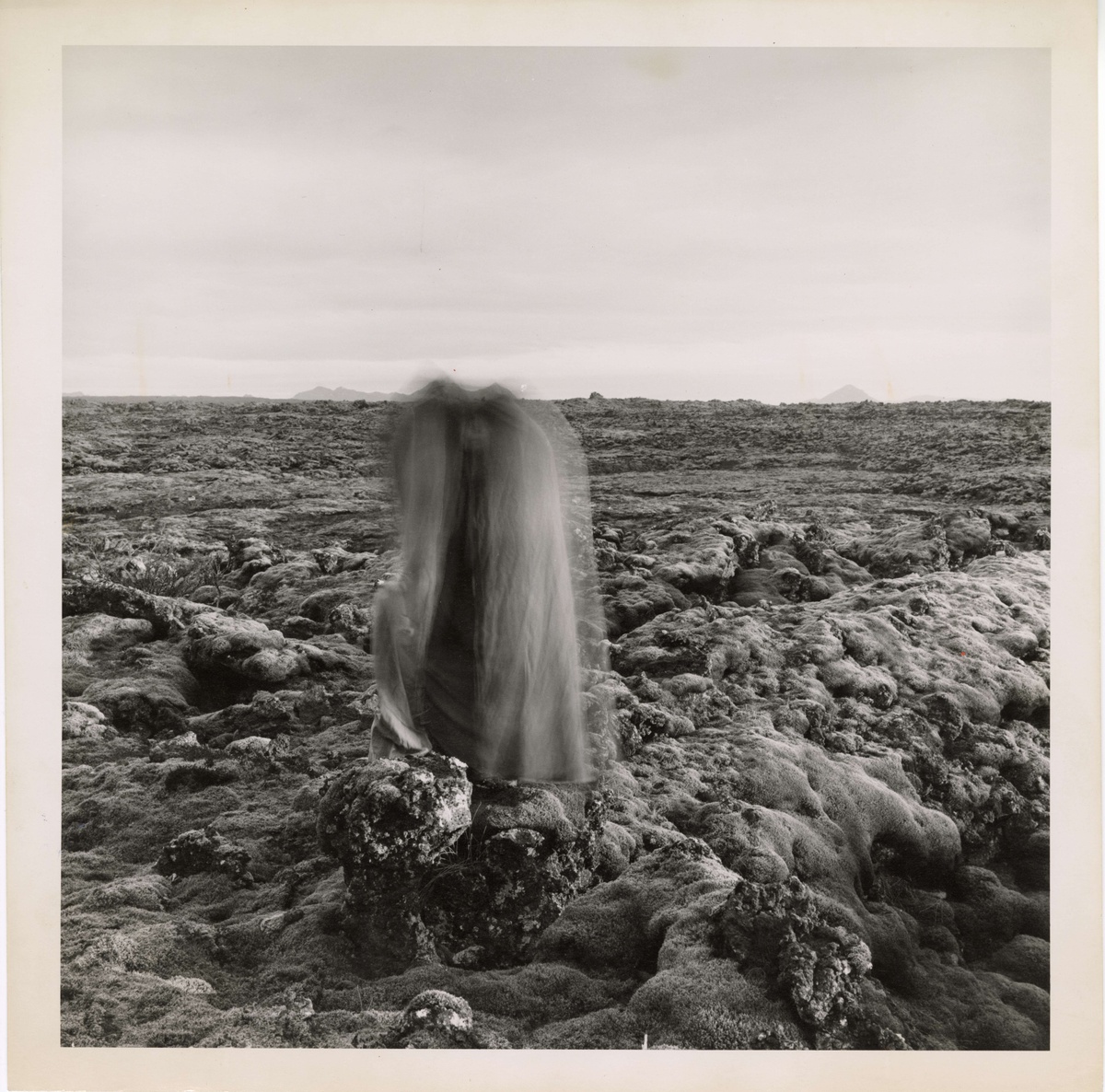
Copyright held by the Estate of Mary Beth Edelson; preserved through a partnership with The Feminist Institute. See record
These works share Edelson’s search for diverse outdoor spaces where she envisions then carefully choreographs her movements as in “Up from the Earth” (1979) taken in a rocky landscape in Reykjavik, Iceland.
She described this series, “I separate myself from the awesome unyielding landscape of hardened lava without trees to establish my own nature.” (Edelson, 1990, 58)
Choosing low-light moments of the day in these varying landscapes allowed Edelson to subtly capture her movements on the film surface via longer exposures.
Grapceva Neolithic Cave, See for Yourself, 1977
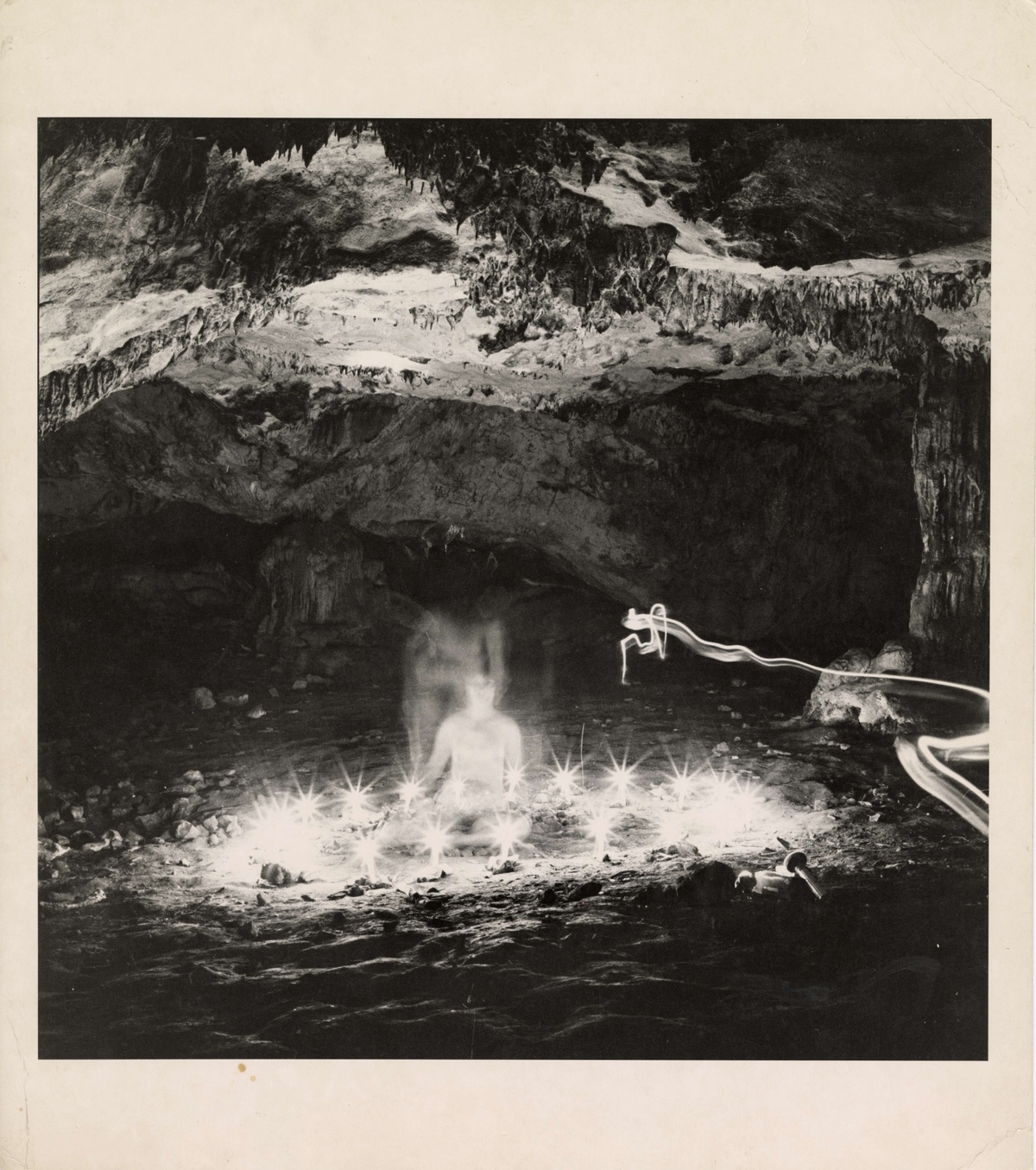
Copyright held by the Estate of Mary Beth Edelson; preserved through a partnership with The Feminist Institute. See record
After reading Marija Gimbutus’s “Gods and Goddess of Old Europe, 7000 to 3500 BC” in 1975 and performing numerous private rituals in nature and her studio, Edelson desired a pilgrimage trip to a Goddess site. She focused on the former Yugoslavia as her research indicated that that this area, referred to as “Old Europe” by archeologists, was an early location for Goddess activity. Travelling with Anne Healy, and with the help of locals, Edelson came upon the cave on Hvar Island (now Croatia). On her second day at the cave, Edelson returned with numerous candles and flashlights to choreograph the image. Owing to the darkness of the space, “Grapceva Neolithic Cave, See for Yourself” was the moment when the artist began using time-lapse exposures to document her private performance, but she also realized this process could record her movements on the film’s surface.
While creating her work on this former site of Neolithic rituals, she noted, “Aware of having the cave to myself, I felt like the center of the universe. My mouth was actually inhaling the cave, all of it, and breathing it out again. The cave contracted and expanded with my rhythms and shimmered on its way back and forth. I made a pact with the cave: it would tell me some of its secrets in exchange for my rituals, rituals that it had not seen for millennia.” (Edelson, 1978, 98)
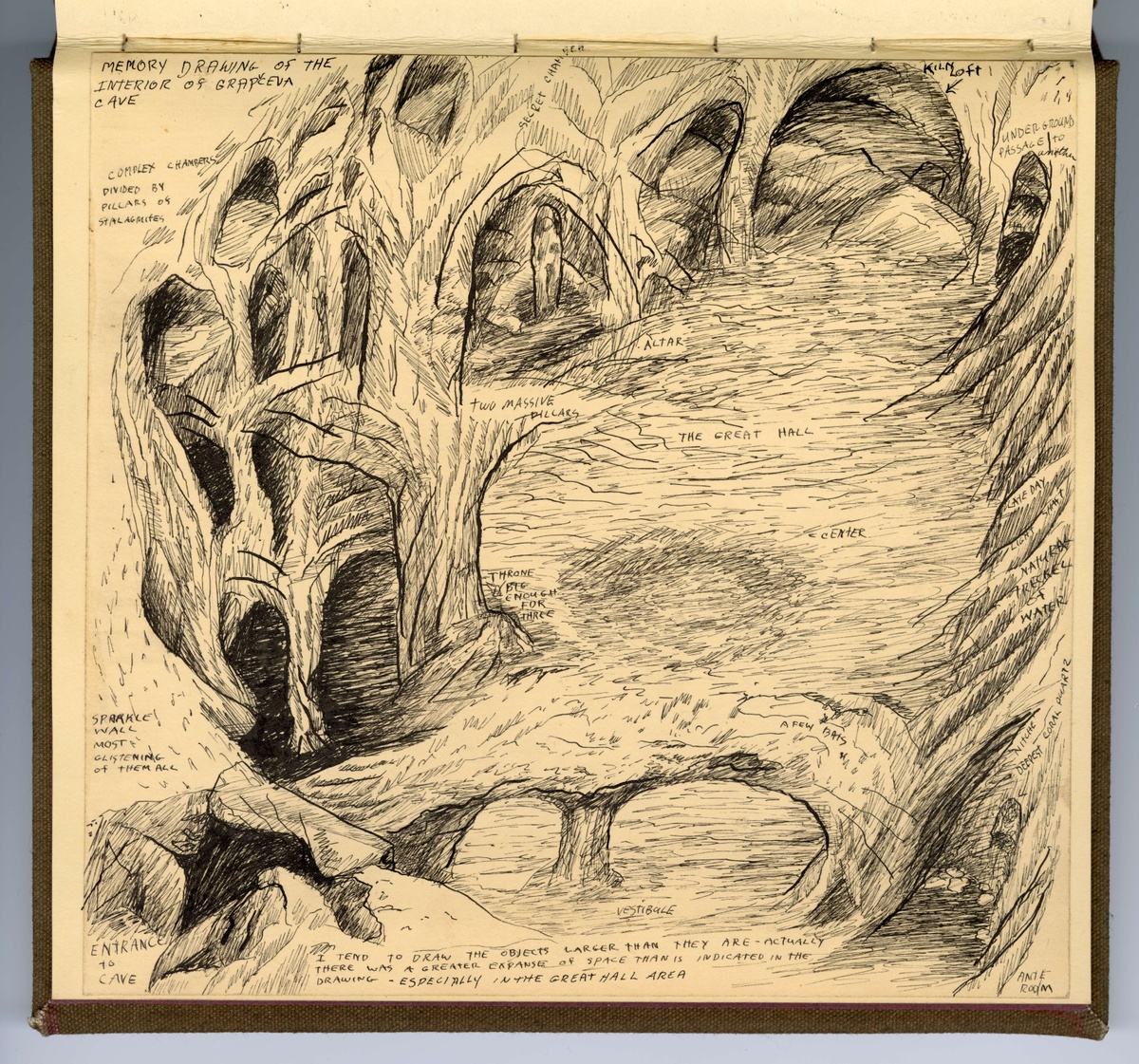
Copyright held by the Estate of Mary Beth Edelson; preserved through a partnership with The Feminist Institute. See record
High Falls series

Copyright held by the Estate of Mary Beth Edelson; preserved through a partnership with The Feminist Institute. See record
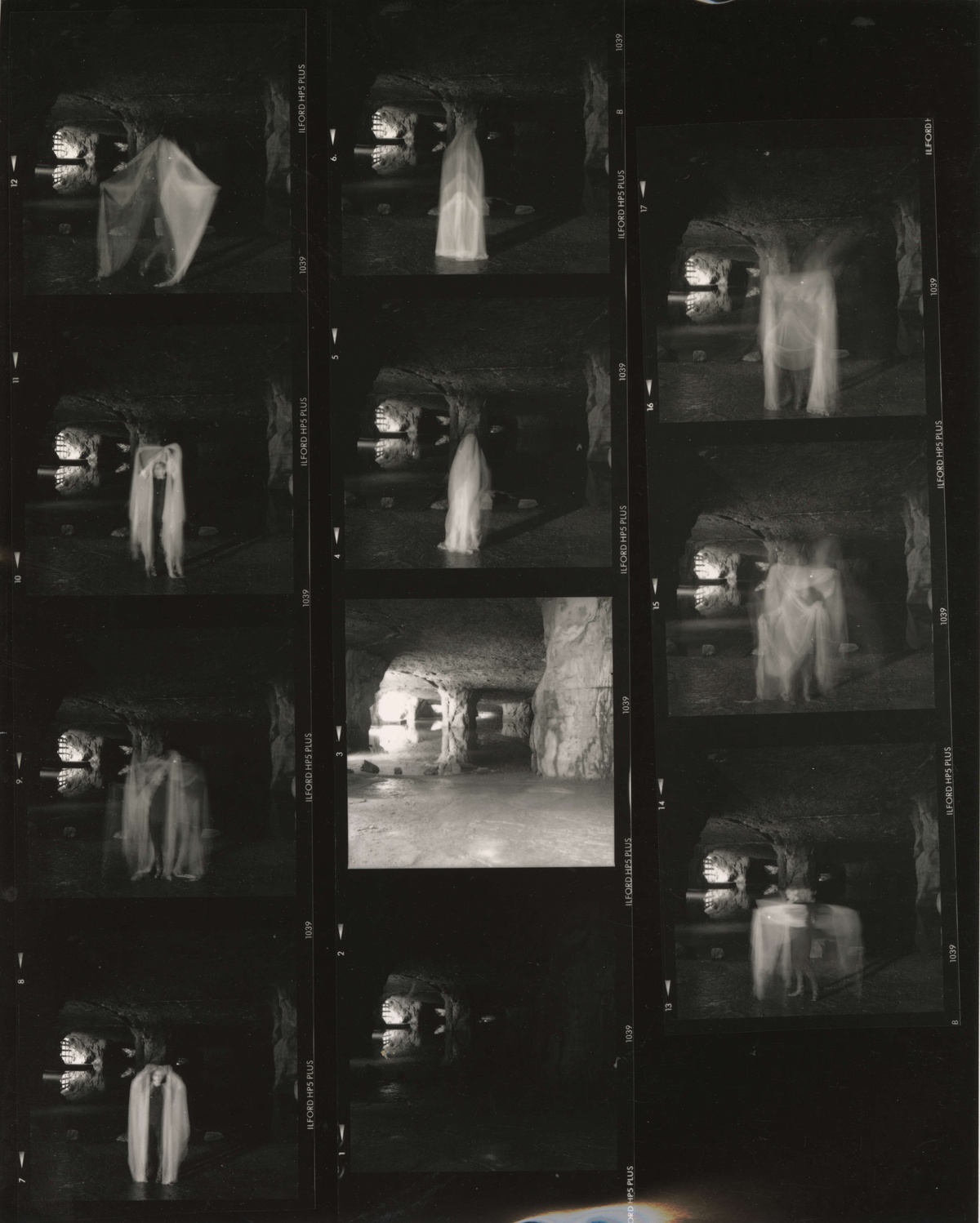
Copyright held by the Estate of Mary Beth Edelson; preserved through a partnership with The Feminist Institute. See record
Memorials to the 9,000,000 Women Burned as Witches in the Christian Era, 1977

Copyright held by the Estate of Mary Beth Edelson; preserved through a partnership with The Feminist Institute. See record
Related items from the archive
Written by Dr. Kathleen Wentrack
© 2019 Kathleen Wentrack
Kathleen Wentrack, PhD, is a Professor of Art History at The City University of New York, Queensborough CC and the editor of the forthcoming book “Collaboration, Empowerment, Change: Women’s Art Collectives.” She recently published “1970s Feminist Practice as Heterotopian: The Stichting Vrouwen in de Beeldende Kunst and the Schule für kreativen Feminismus,” in “All Women Art Spaces in the Long 1970s” edited by Agata Jakubowska and Katy Deepwell (Liverpool University Press, 2018). She is a contributing editor to Art History Teaching Resources and Art History Pedagogy and Practice and a co-coordinator of The Feminist Art Project in New York City.
Produced by Erica Galluscio
Photography of studio space provided by Kolin Mendez Photography
Accola Griefen Fine Art exhibition photos courtesy of Accola Griefen Fine Art: Rob van Erve
Images of “Goddess Tribe” installation courtesy of David Lewis New York
Select Bibliography
Buszek, Maria Elena. “Mothers and Daughters, Sluts and Goddesses: Mary Beth Edelson and Annie Sprinkle.” In: It’s Time for Action (There’s No Option). About Feminism. Ed. Heike Munder. Zurich: Migros Museum für Gegenwartskunst and JRP/Ringier, 2007, 228-61.
Edelson, Mary Beth. The Art of Mary Beth Edelson. New York: Seven Cycles, 2002.
Edelson, Mary Beth. Firsthand: Photographs by Mary Beth Edelson, 1973-1993 and Shooter Series. Essay by Jan Avgikos, “No Reverse Gear.” Mary Beth Edelson: New York, 1993.
Edelson, Mary Beth. Interview with Kathleen Wentrack. New York, 12 September 2008.
Edelson, Mary Beth. “Male Grazing: An Open Letter to Thomas McEvilley.” In: Feminism-Art-Theory: An Anthology, 1968-2000.” Ed. Hilary Robinson. Oxford: Blackwell, 2001, 592-94. First published as “Objections of a ‘Goddess Artist:’ An open Letter to Thomas McEvilley.” New Art Examiner 16, No. 8 (April 1989): 34-38.
Edelson, Mary Beth. “Pilgrimage/See for Yourself: A Journey to a Neolithic Goddess Cave, 1977. Grapceva, Hvar Island Yugoslavia.” Heresies: A Feminist Publication of Art and Politics #5, Spring 1978: 96-99.
Edelson. Mary Beth. Seven Cycles: Public Rituals. With an Introduction by Lucy R. Lippard.” New York: Mary Beth Edelson, 1980.
Edelson. Mary Beth. Shape Shifter: Seven Mediums. New York: Mary Beth Edelson, 1990.
Edelson. Mary Beth. “Success Has 1,000 Mothers: Art and Activism from Mary Beth Edelson’s Point of View.” In: Women’s Culture in a New Era: A Feminist Revolution? Ed. Gayle Kimball. Lanham, Maryland: The Scarecrow Press, 2005, 27-60..
Freitag, Barbara. Sheela-Na-Gigs: Unraveling an Enigma. London: Routledge, 2004
Gimbutas, Marija. Gods and Goddess of Old Europe, 7000 to 3500 BC/Myths, Legends, and Cult Images. Berkeley: University of California Press, 1974.
Griefen, Kat. “Considering Mary Beth Edelson’s Some Living American Women Artists.” The Brooklyn Rail, March 2019, 38-9.
Höglinger, Nora. “Mary Beth Edelson: “The Goddess is Us.” In: Feminist Avant-Garde: Art of the 1970s, The Sammlung Verbund Collection, Vienna. Ed. Gabriele Schor. Munich: Prestel Verlag, 2016, 120-25.
Mesopotamian Gods and Goddesses. Ed. Vincent Hale and Vincent Croce. New York: Britannica Educational Publishing and Rosen Publishing Group, 2014.
Stone, Merlin. When God Was a Woman. New York: Dial Press, 1976.
Wack! Art and the Feminist Revolution. Ed. Lisa Gabrielle Mark. Los Angeles: The Museum of Contemporary Art, 2007.
Winifred Milius Lubell, The Metamorphosis of Baubo: Myths of Women’s Sexual Energy, Nashville and London: Vanderbilt University Press, 1994











